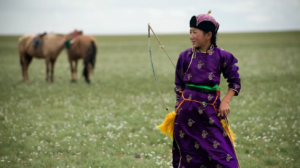The Powerful Women of an Ancient Empire
Originally published by Lina Zeldovich for BBC
With no cities or courts, the formidable and nomadic Xiongnu kingdom sent princess emissaries to control its frontiers.
The raiders came from the north. They came on horseback, the skilled bowmen shooting powerful arrows with expert precision. They ruined and burned the crops, which the Han Chinese villagers living on China’s northern frontiers in about 200 BCE tended to with great attention. The Han Chinese called the invaders “Xiongnu”, which meant “fierce slave”, a pejorative term aimed to emphasise the barbarians’ “inferiority”.
In reality, however, the Xiongnu outperformed their Chinese neighbours in military expertise and political organisation. Comprised of different ethnic tribes, the Xiongnu were the world’s first nomadic empire, well-organised and formidable enough to cause so much trouble to the Han Chinese that the latter eventually resolved to build the Great Wall of China. More interestingly, behind the fierce bowmen, it was the powerful Xiongnu women who helped hold the empire together.
Piecing together the Xiongnu’s curious history has been a challenge because despite their high organisation and military prowess, the nation never developed a written language. “So the majority of facts we know about Xiongnu come from their graveyards and their enemies,” said Christina Warinner, a group leader in the Department of Archaeogenetics at the Max Planck Institute.
And the graveyards tell an interesting story, as a recent study has proven that a surprisingly high number of elite Xiongnu burials hold female remains.
Archaeologists excavating Xiongnu burial sites across Mongolia have long posited that remains in some of the richest and most elaborate graves were female. However, it was only when genetic sequencing technologies finally came of age a few years ago that Warinner’s Max Planck team was able to confirm the female gender of several elite burials with absolute certainty, publishing their study findings in the journal Science in April 2023.
“Our genetic findings prove that the elite princesses played important roles in the Xiongnu society, politically and economically,” said Jamsranjav Bayarsaikhan, who heads the Research Centre at the National Museum of Mongolia in Ulaanbaatar and is a project coordinator at the Max Planck Institute for Geoanthropology in Germany.
These findings have changed scientists’ perspective on how Xiongnu expanded their territory and held their nomadic empire together, and the important role their women played in politics and economy.
